It would be very helpful to consulting ecologists like me, if more information were available on the characteristics of habitats (soil textures, canopy cover, moisture levels, depths, slope aspects) that are used for hibernation and nesting of the various turtle species in this region. Good southern New England data is available for the endangered bog turtle, but not for the other declining species, such as Eastern box turtle, wood turtle, and spotted turtle, or for common species like painted turtle, musk turtle, and snapping turtle. This would help land planning professionals make recommendations, such that development and roadway projects and residential improvements could better avoid these habitats, or at least mitigate for the habitat loss by creating similar habitat nearby.
Eastern Box Turtles (Terrapene c. carolina) must hibernate on land, in locations where they will neither be frozen, nor suffocate due to inadequate oxygen. Even in a torpid state, with slow metabolism, they do need some oxygen. Developing turtle eggs also need some oxygen.
In Connecticut, E. Box Turtles are missing from the northwestern Litchfield County Hills, where temperatures are cooler and where very shallow, rocky soils are common. The elevational maximum is 700 feet, according to our state’s principal reference book for turtles, Dr. Michael Klemens’ Amphibians and Reptiles of Connecticut and Adjacent Regions, 1993, CTDEP Bulletin No. 112. E. Box Turtles (EBT’s) are more common in the southern U.S., compared to southern New England and New York State; likely due to less mortality during hibernation. That may be why human poisoning by sequestered mushroom toxins has been reported during strikes among southern Appalachian, but not Pennsylvania coal miners.
In my experience, soil scientists and others do most often find Eastern Box Turtles in the vicinity of relatively coarse-textured soils. We have found them repeatedly in the deep, coarse-textured (sandy) outwash plains near rivers; also in Long Island and Connecticut Central valley farmland with deep soils. These soils have a high proportion of pore spaces and, accordingly more available oxygen than fine-textured soils. They are also easy to dig. However, I am not aware of solid soils data for actual hibernation and nesting sites in deep coarse or coarse-loamy soils in our region. .
Much of southern New England and adjacent New York state has stony, till-derived soils, often fine textured, shallow to bedrock, or with a hardpan. E. box turtles may also still locally common in these areas, in East Hampton, CT and Haddam Neck, CT, for example. In a till-dominated landscape, deep, organic-rich soils bordering forested seasonal wetlands are likely used for hibernation. Dr. Klemens knows of data, showing soils on wetland perimeters being used in a stony till landscape in Southeastern New York State (personal communication). Rotten stumps and logs are another EBT hibernation solution reported by various southern turtle researchers (in summary chapters in books by Ernst and Dodd) and also by graduate students at Central Connecticut State Univ., studying a population on the slope of a trap rock ridge in southern CT.
Friable soils are not only well suited for hibernation, on land, for the terrestrial Eastern Box Turtle, but also for nest-digging by several other Connecticut turtle species. A southern or western exposure would seem more important for a nesting site than a hibernation site, but data on slope orientation of both hibernation and nesting sites is sorely lacking. Most of the above is based on informal observations or a single study. Solid soils and landscape data, with accompanying basic turtle data, is needed to accurately document habitat characteristics of nesting and hibernation sites!
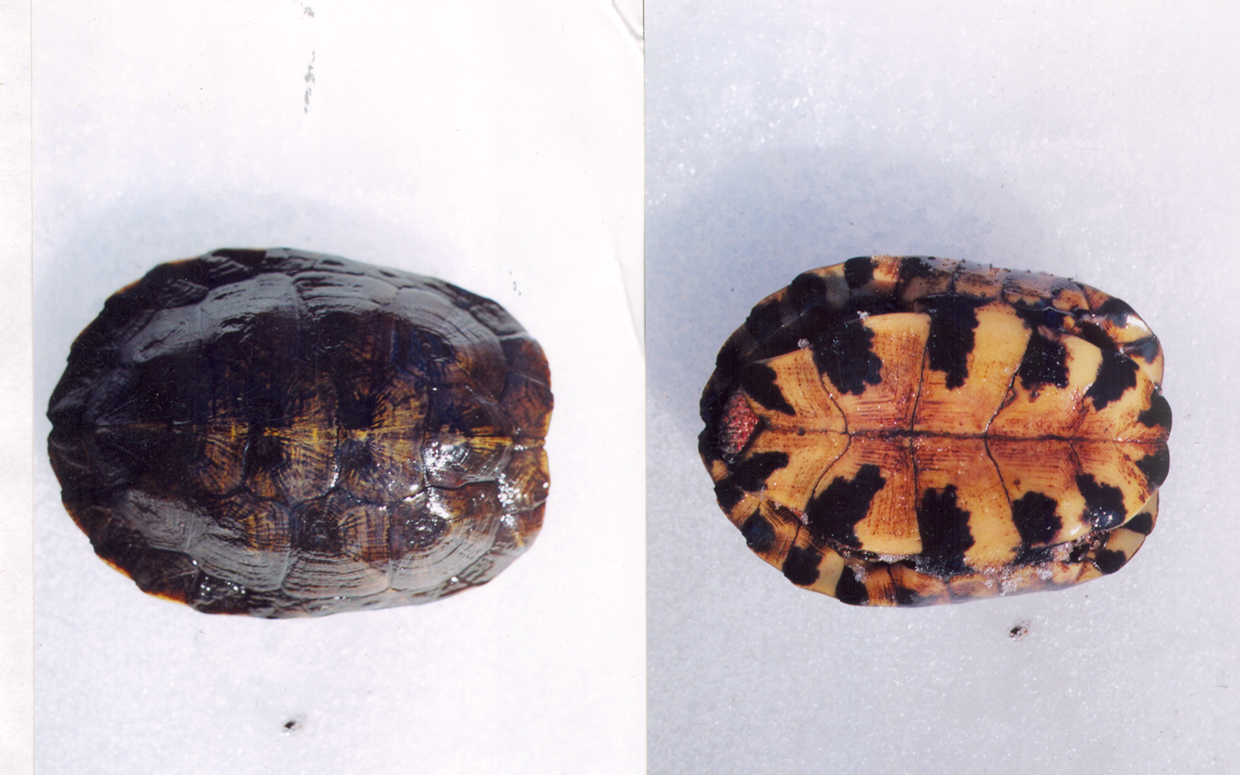
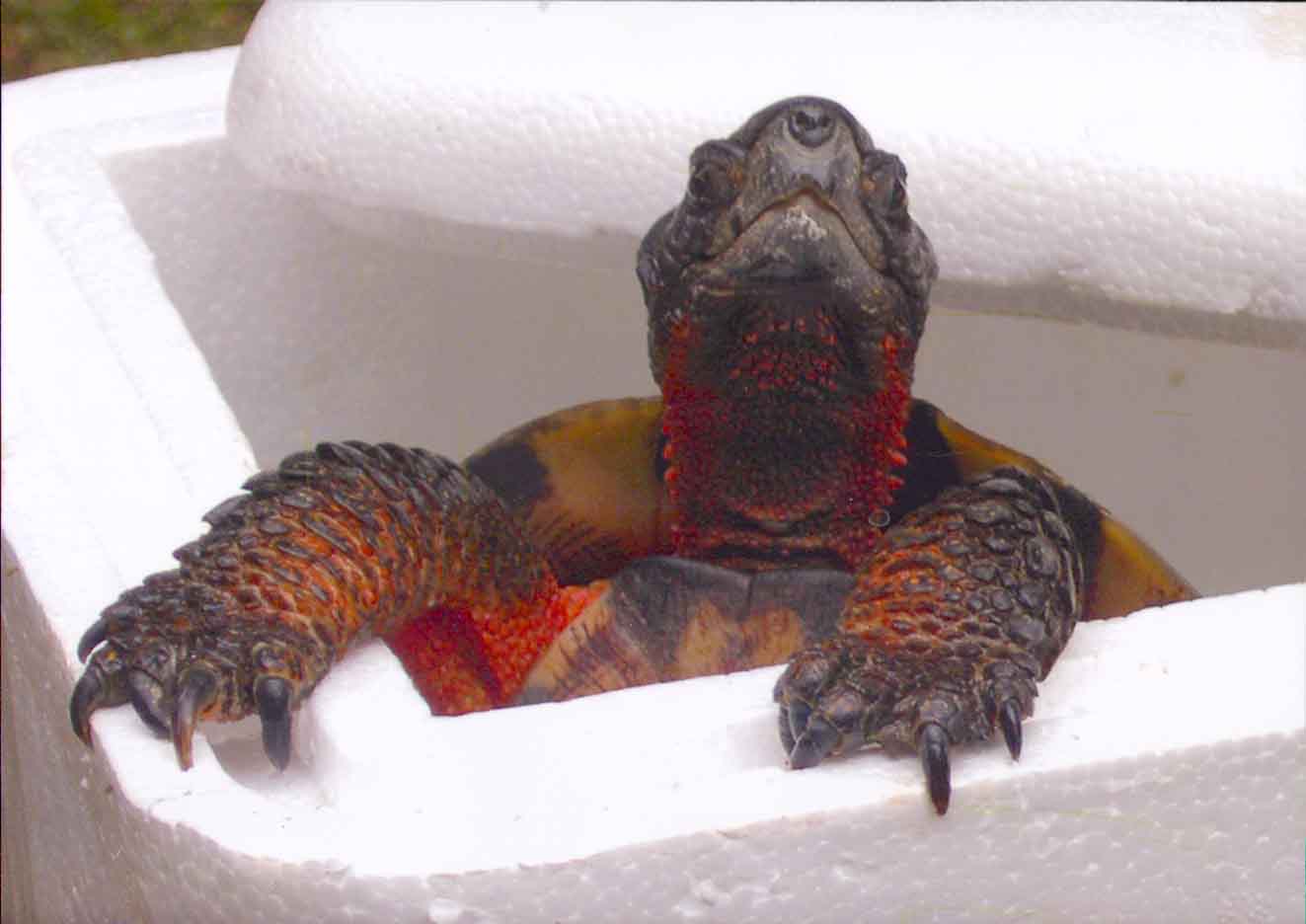
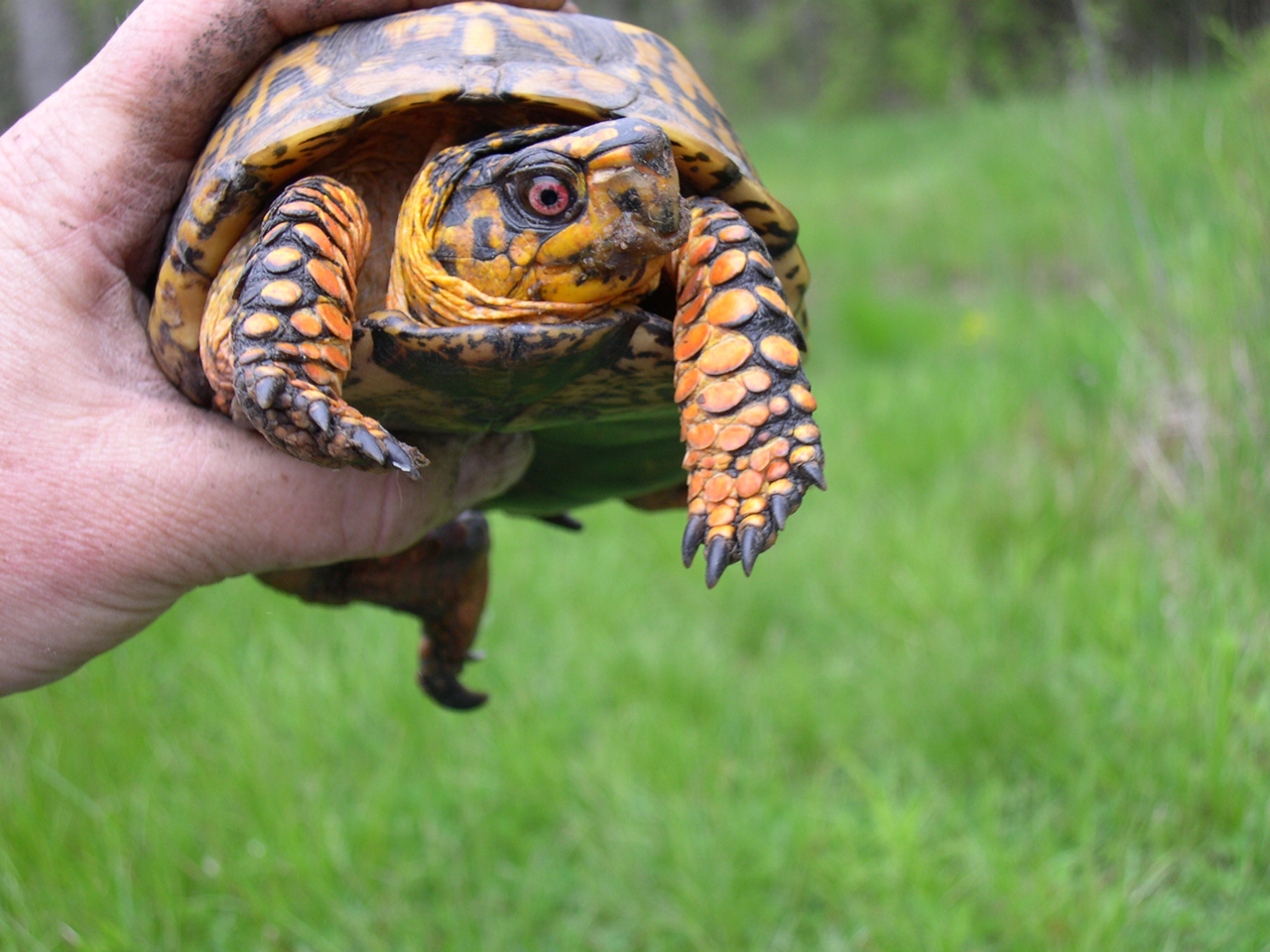
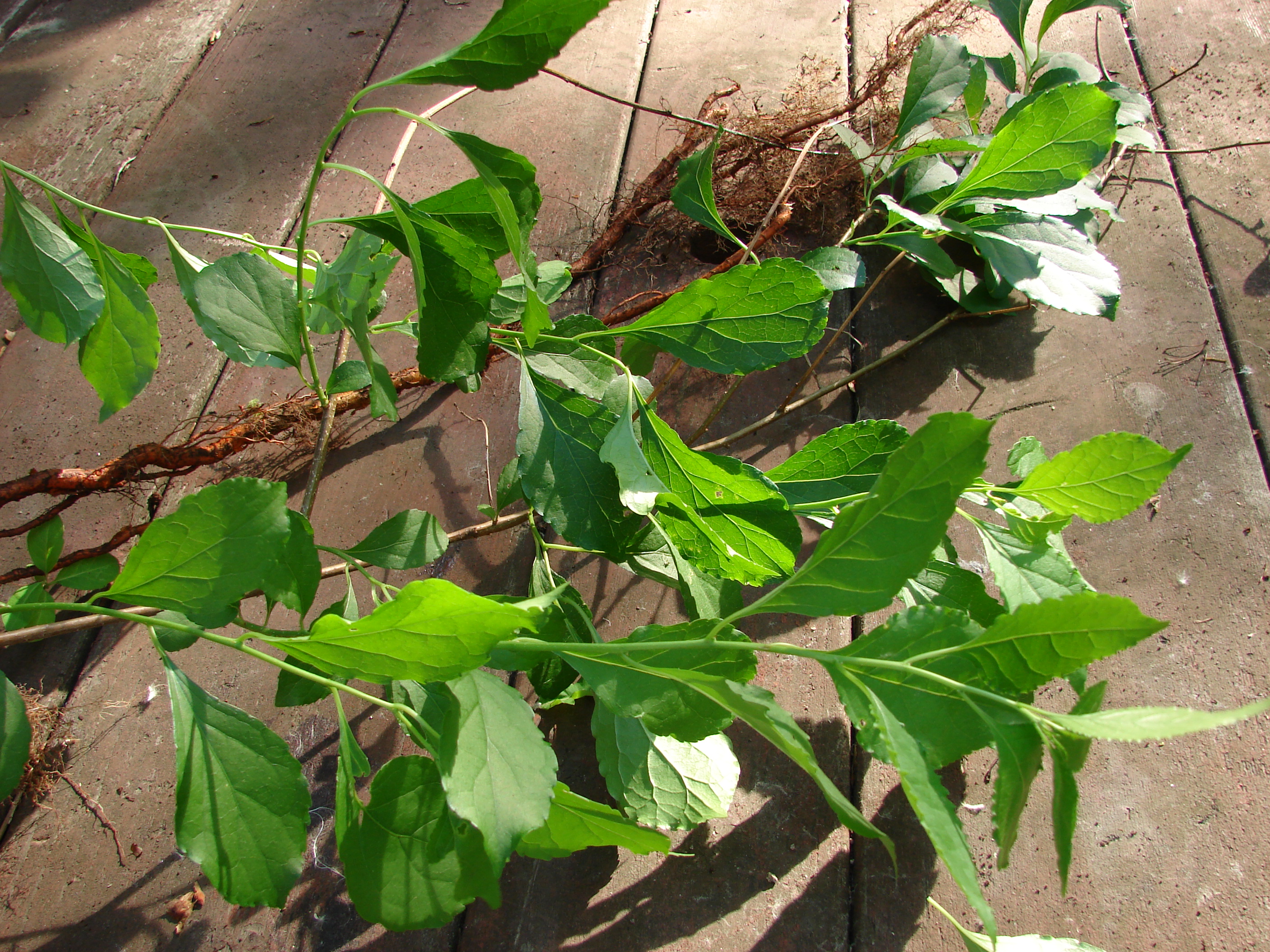
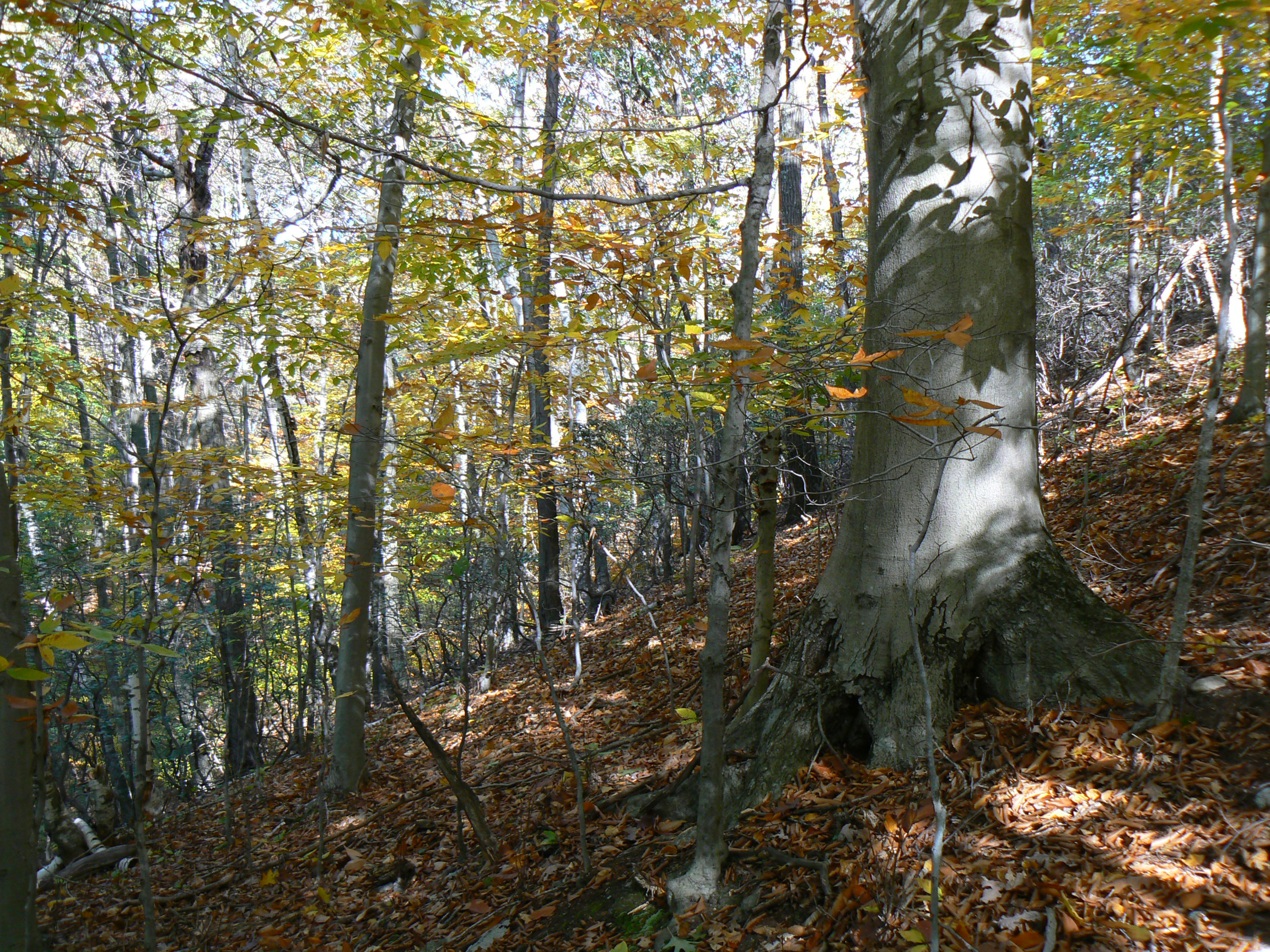
 t have sent out root suckers. If one is willing to wait five to ten years, a low budget planting plan with clonal species can yield impressive coverage. Sumac clones can be twenty to thirty feet tall, and make a fine hedge. Scattered aromatic sweet fern (Comptonia) will coalesce to form a low spreading cover on a sandy slope. A few sweet pepper bush (Clethra) shrubs will become a a mass of white fragrant flowers in early summer. Patch-forming native woody species, that form large, even homogeneous masses are actually very well suited to formal landscaping, contrasting with isolated specimen plants. Other excellent clonal shrubs for use in landscaping are gray dogwoods, chokeberries (Aronia spp.) , and bayberries.
t have sent out root suckers. If one is willing to wait five to ten years, a low budget planting plan with clonal species can yield impressive coverage. Sumac clones can be twenty to thirty feet tall, and make a fine hedge. Scattered aromatic sweet fern (Comptonia) will coalesce to form a low spreading cover on a sandy slope. A few sweet pepper bush (Clethra) shrubs will become a a mass of white fragrant flowers in early summer. Patch-forming native woody species, that form large, even homogeneous masses are actually very well suited to formal landscaping, contrasting with isolated specimen plants. Other excellent clonal shrubs for use in landscaping are gray dogwoods, chokeberries (Aronia spp.) , and bayberries.